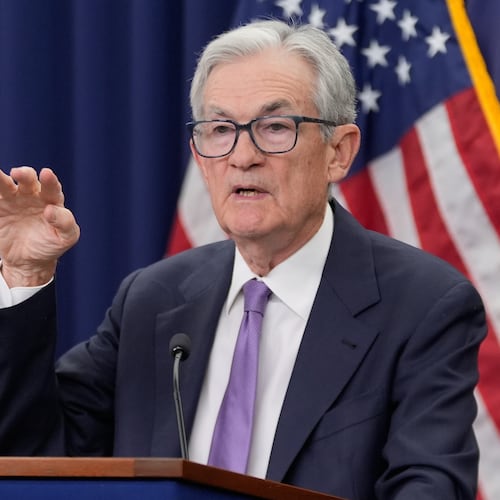Data is dandy, statistics are spiffy, but animal spirits make things happen.
The phrase, coined 88 years ago by John Maynard Keynes, was meant to describe the power of emotion and psychology in the human action that drives the economy, despite the common reliance on numbers and formulas used to describe economic behavior.
Sure, said the iconic economist, the economy is shaped and propelled by crucial, measurable factors — like the amount of money in circulation and the ways that demand is created and boosted.
But at turning points, what can matter most is fear, greed, hope and the herd instinct. You know, animallike reactions.
So, while experts scrutinize everything from interest rates to inventories, they also often keep close tabs on surveys that track sentiment — that is, the attempts to measure attitudes and psychology of companies and consumers.
No matter what the data say, people won’t spend money unless they want to. And the surveys are clues.
Here are six things to know about recent surveys:
1. Owners of small companies have been feeling better about the economy.
The National Federal of Independent Business, which lobbies for policies favorable for small companies, surveys members each month. In late summer, NFIB Small Business Optimism Index hit its highest reading since February 2022, after rising for four consecutive months.
“It’s hard to mistake this four-month string of upticks for anything other than a trend improvement in sentiment,” wrote Wells Fargo economists in a newsletter.
How they feel and what they intend to do matters for the overall economy. Small companies employ nearly 62 million Americans, a little less than half of the workforce, according to the U.S. Small Business Administration.
2. But … small business owners are still pretty concerned.
Despite the improved outlook, the NFIB optimism index is still below its 50-year average. Company executives say they are still worried about a raft of issues — finding the right employees, for example, and paying them enough to keep them.
“With job openings, we are looking at levels that we saw pre-COVID,” Holly Wade, executive director NFIB research, said Aug. 28 during a quarterly conference of the Georgia State Economic Forecasting Center. “Which was a tight labor market then.”
There’s also the residue of rampant inflation in 2022 and 2023. While higher interest rates seem to have price increases under control, goods and services cost a lot more now than a few years ago.
“The underlying details continue to reveal hesitancy about the demand outlook amid a cloudy economic and political landscape,” wrote the Wells Fargo economist.
3. Most Americans don’t think it’s a good time to buy a home.
Housing is a large part of the economy and a crucial component in the wealth that many Americans are collecting to prepare as funding their retirement or, perhaps, to pass along to the next generation. So, attitudes about the housing market are a window on American financial health, as well as the larger economy.
Credit: J. Scott Trubey
Credit: J. Scott Trubey
And the share of people who think homes are affordable is shrinking.
The Home Purchase Index showed only 17% of consumers thought it was a good time to buy a home, according to a recent survey by Fannie Mae.
Only 21% expect home prices to fall, although 29% think mortgage rates will decrease, Fannie Mae said.
4. Consumers feel better, but are still fretting.
The Conference Board’s Consumer Confidence Index rose in August, showing improvement in how consumers view the present, but also a slightly rosier outlook for the next few months.
But don’t get the idea that everything’s coming up Pollyanna, said Dana Peterson, the Conference Board’s chief economist. “Consumers continued to express mixed feelings. Compared to July, they were more positive about business conditions, both current and future, but also more concerned about the labor market.
While unemployment has been historically low, it has been rising and people have noticed.
“Assessments of the labor market going forward were more pessimistic,” Peterson said. “Consumers were also a bit less positive about future income.”
5. Sentiment surveys are sometimes wrong.
People often respond to news reports and buzz, as much as to the hard economic facts. They said one thing about the outlook — it’s dismal or it’s bright — and then they go on and act like they believe the opposite.
The NFIB optimism survey fell for months starting in late 1983. The economy kept chugging along.
Or in the fall of 1987, the University of Michigan survey on consumer confidence plunged, at least partly because of a dramatic drop in stock market prices in October that dominated news coverage. With many experts concerned about the savings and loan industry, much of the public talk was ominous and foreboding.
But Wall Street’s woes were temporary, the government dealt with the troubled lenders and consumers kept on spending.
6. Still, when sentiment falls hard, pay attention.
In 2005, the NFIB optimism began to slide. And then it slid some more. The housing bubble was building to a peak, yet many in the industry shrugged off concerns.
First, the subprime loans began to go bad, then Wall Street firms began to stagger under the burden of bundled-up bad debt and then the layoffs began. By late 2007, the economy was falling into a deep recession that would mean millions of foreclosures and layoffs.
The NFIB optimism index bottomed out in 2009 and took years to recover.
About the Author
Keep Reading
The Latest
Featured




